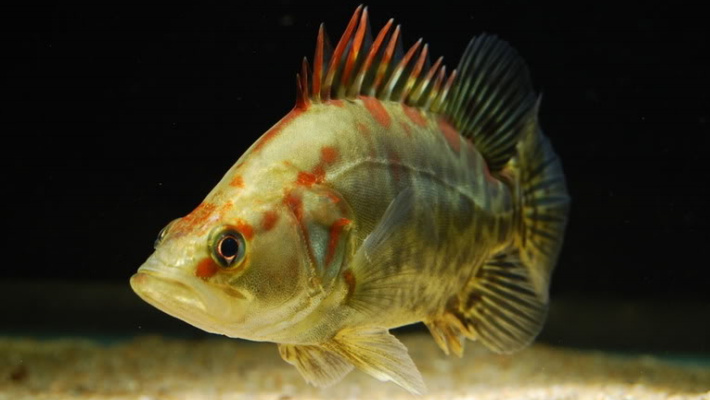|
Zooplankton
The amino
acid content in freshwater copepods (Eudiaptomus
zachariasi), cladocerans Daphnia
pulex and Ceriodaphnia sp. as
well as copepodites (Cyclops strenuus)
is studied by Dabrowski
& Rusiecki (1983).
Yet, the amino acid content in saltwater brine shrimp, Artemia salina, nauplii on hatching and during fasting is determined.
The major
free amino acids in C. strenuus dry
matter are 1,43 % arginine, 0,22 % histidine, 0,20 % alanine, 0,15 % glutamic
acid and 0,11% lysine. Free arginine content decreases in the daphnids as they
increase in the size. The content of all free amino acids in fasting Artemia nauplii is lower than in the
freshwater zooplankters. The major free amino acids in nauplii are 0.55 %
proline, 0.41 % alanine, 0.34 % glycine and 0.37 % serine, respectively.
Chemical
composition of Daphnia
longispina and
other daphnids is studied by Holm & Walther
(1988). Non-polar amino acid alanine ((from 13,4 mol % to 20,3 mol %), basic
amino acids arginine (11,6 mol %) and lysine (10,2 mol %) as well as polar,
uncharged amino acid glycine (10,0 mol %) are most abundant in the plankton extract.
The same
authors have demonstrated rapid leakage of amino acids from frozen daphnids
upon thawing.
The
moisture content, crude protein level and amino acid profile of three
freshwater zooplankton (Moina micrura,
Diaphanosoma excisum, Brachionus calyciflorus) commonly used
for rearing fish larvae are analyzed by Ovie & Ovie (2006). The moisture
contents and crude protein levels are similar, as follows: M. micrura 89,0 % and 52,4 %; D.
excisum 89,3 % and 57,3 %; B.
calyciflorus 91,6 % and 50,3 %, respectively. The samples are represented
by 17 amino acids: nine essential and eight non-essential amino acids. The
dominant essential amino acids (per 16 g N) in M. micrura are lysine (10.73 g), arginine (8,17 g) and leucine (8,0
g); in D. excisum lysine (9,95 g),
leucine (8,0 g) and valine (6,23 g); in B.
calyciflorus leucine (8,95 g), lysine (8,64 g) and arginine (6,37 g). According
to Ovie & Ovie (2006), in all three species tested (M. micrura, D. excisum, B. calyciflorus), glutamine and aspartic
acid dominate the non-essential amino acid profile.
Seasonal Variations
Seasonal
variations in the concentrations of 19 free amino acids in the whole body
homogenates of freshwater amphipod Gammarus
pseudolimnaeus are measured by Graney & Giesy (1986). The greatest
total concentrations of free amino acids, 226,9 and 286,4 nmol per mg dry
weight, are observed in April and May, with declining through summer months. The
pattern of relative concentrations of individual free amino acids in G. pseudolimnaeus is found to be similar
to that of other freshwater invertebrates. Alanine represents the most abundant
amino acid (16,2-22,4 %) throughout an entire year. Arginine and leucine
exhibit the next greatest abundances and comprised an average of 10,2 and 10,4 %
of the total free amino acid concentration, respectively.
Holm & Walther (1988) give seasonal variations in the
concentrations of free amino acids in D. longispina and other daphnids.
Amino acid
profile of amphipod Gammarus lacustris
in the beginning of autumn has the high level of alanine (22,6 mmol per ml of
homogenate) and ornithine (17,6 mmol) (Karanova & Andreev, 2010). The
amount of alanine and ornithine accounts for 39,8 % of the total pool of free
amino acids, taken together alanine, ornithine, lysine and leucine form 55% of
this pool.
Decapoda
The
abdominal muscle, antennal gland, haemolymph, hepatopancreas and ovary of
freshwater Astacus leptodactylus are
analysed for free and protein-bound amino acids by van Marrewijk & Ravestein
(1974). Free amino acid content is highest in the abdominal muscle and lowest
in the haemolymph. The most abundant free amino acids are glycine, arginine and
alanine. Together they account for up to 38 mol % in the hepatopancreas and up
to 73 mol % in the abdominal muscle of the total amount. The content of free
amino acids in the hemolymph of three crayfish species, Astacus astacus, A.
leptodactylus and Ortonectes limosus,
is researched by Rogala et al. (1978), setting the differences in lysine and histidine
content.
In
freshwater Chinese mitten crab, Eriocheir
sinensis, and A. astacus
concentration of amino acids is less than in marine decapods (Camien et al.,
1951) (mitten crab is an invasive species that lives in freshwater but migrates
seawards to breed).
Freshwater and Saltwater Crustaceans
Among the
various biochemical compounds in freshwater and marine copepods, cladocerans, euphausiids and mysiids,
protein, phospholipids, carbohydrates as well
as chitin show no significant differences either between taxonomic groups or
habitat types (Ventura,
2006). In contrast, differences occur in freshwater versus marine species and
among taxonomic groups for lipids, free amino acids, nucleotides and nucleic acids.
According to Camien
et al. (1951),
concentration of amino acids in freshwater decapods (E. sinensis and A. astacus)
is less than in marine decapods (Homarus
vulgaris and Maja squinado) that
is connected with the regulation of greater
osmotic pressure in the marine environment.
Carr et al. (1996) give comparative data on concentrations of free amino
acids and other substances in marine euphausiids and decapods.
Glycine is abundant
in marine decapods similar to freshwater species, plus more amounts of taurine (Weber & van Marrewijk, 1972) and betaine (Carr et al., 1996) that are absent
in freshwater species. For example, in euryhaline brown shrimp, Crangon crangon,
the amount of taurine grows with the growth of salinity (from 224,16 μmol for 17,1 ‰ to
419,83 μmol per g fresh weight for 40.8 ‰) (Weber & van Marrewijk, 1972).
Basic References
Camien M.N., Sarlet
H., Duchâteau G., Florkin M. 1951. Non-protein amino acids in mussle and blood of marine and fresh water
crustacea. Journal of Biological
Chemistry 193, 881-885
Carr W.E.S., Netherton III J.C., Gleeson R.A., Derby C.D.
1996. Stimulants of feeding behavior in fish: analyses of tissues of diverse
marine organisms. The Biological Bulletin
190, 149-160
Dabrowski K., Rusiecki M. 1983. Content of total and free
amino acids in zooplanktonic food of fish larvae. Aquaculture 30, 31-42
Graney R.L.,
Giesy J.P. Jr. 1986. Seasonal changes in the free amino acid pool of the
freshwater amphipod Gammarus pseudolimnaeus
Bousfield (Crustacea: Amphipoda). Comparative
Biochemistry and Physiology Part A: Physiology 85, 535-543
Holm J.C., Walther
B.T. 1988. Free amino acids in live freshwater zooplankton and dry feed:
Possible importance for first feeding in Atlantic salmon fry (Salmo salar). Aquaculture 71, 223-234
Karanova M.V.,
Andreev A.A. 2010. Free
amino acids and reducing sugars in the freshwater shrimp Gammarus lacustris
(Crustacea, Amphipoda) at the initial stage of preparation to winter season. Journal of Evolutionary Biochemistry and
Physiology 46, 279-283
Ovie S. I.,
Ovie S.O. 2006. Moisture, protein, and amino acid contents of three freshwater
zooplankton used as feed for aquacultured larvae and postlarvae. The Israeli Journal of Aquaculture 58, 29-33.
Rogala A.,
Michalak W., Gondko R. 1978. Free amino acids in the hemolymph of three species of freshwater
crayfish. Comparative Biochemistry and Physiology Part A: Physiology 60, 445-446
van
Marrewijk W.J.A., Ravestein H.J.L. 1974. Amino acid metabolism of Astacus leptodactylus Esch. I.
Composition of the free and protein-bound amino acids in different organs of
the crayfish. Comparative Biochemistry
and Physiology Part B: Comparative Biochemistry 47, 531-542
Ventura M., 2006. Linking biochemical and
elemental composition in
freshwater and marine
crustacean zooplankton. Marine Ecology
Progress Series 327, 233-246
Weber R.E., van Marrewijk W.J.A. 1972. Free amino acids
in the shrimp Crangon crangon and
their osmoregulatory significance. Netherlands Journal of Sea Research 5, 391-415
|








 SUBSCRIBE
SUBSCRIBE


